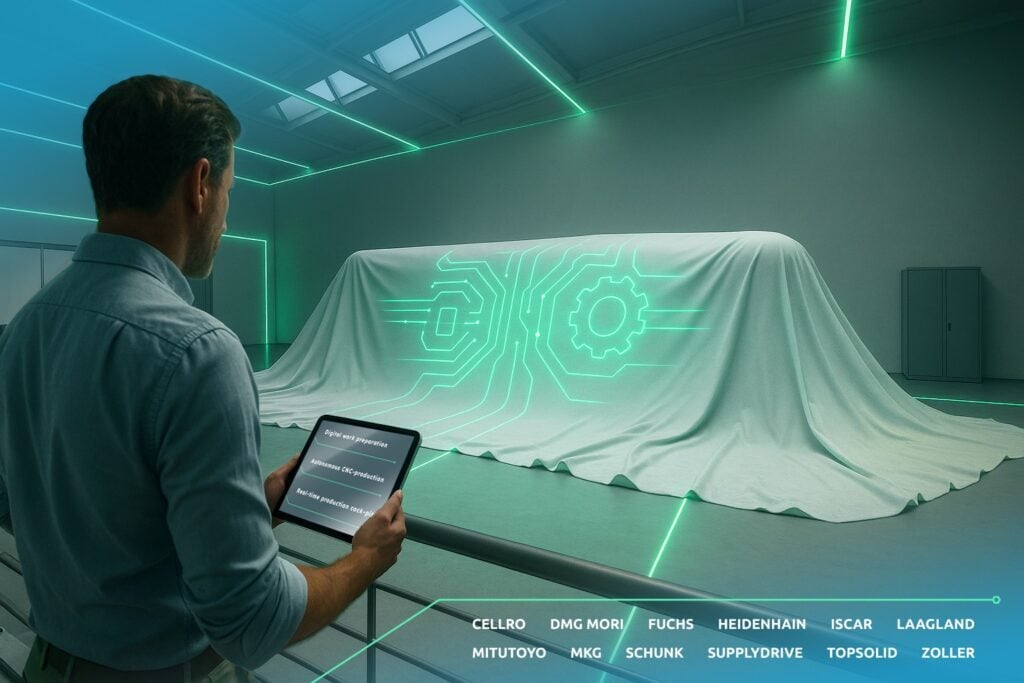Retrofit, but do it right ‒ how to sustainably invest in your existing plants
Published: July 26, 2022
Last update: August 20, 2025
Prepare your machines for the future
Manufacturers from various industries depend on efficient production plants with state-of-the-art technology. The most common yet not always economically viable solution to this challenge is the Greenfield approach: discard the old machines and replace them with new models.
But what alternative is there? Retrofitting, which means that existing plants are upgraded with new parts. This approach comes in handy when you're digitalizing your processes in terms of Industry 4.0: new controls, communication channels and sensors enable even old machines to collect, process and analyze data.
What competitive advantage does retrofitting offer manufacturers?
If your machine is still in good shape and only needs a problem-specific expansion, a retrofit is the ideal solution for you. It not only extends the service life of the plant, but is also less expensive than purchasing a new one. For example, productivity and energy efficiency can be increased to a certain extent. Another benefit is the significantly reduced need for training: your employees are already familiar with the technology and only need to be trained in the new components. In addition, the company's know-how is conserved as every machine is different from the rest.
But before you tackle the retrofitting project, you should ask yourself a fundamental question: Do you want to interfere with the machine's switch cabinet? You should be aware that this might lead to problems with the CE marking and work safety. Since it's better to be safe than sorry, you should rather add sensors and analysis units to a machine instead of changing the existing electronics when making a digital retrofit.
Retrofit – a true alternative to purchasing a new machine?
Technological development is advancing more quickly than ever, also in the field of production machines. In order to avoid having to purchase a completely new plant for every technical innovation, it might make sense to do regular, demand-specific retrofitting, especially in the field of sensors and communication protocols. If the mechanical parts of your machine still meet your requirements, a retrofit can definitely be worthwhile and possibly offer a higher added value than a new purchase.
Whether you are likely to break even with a retrofit or whether you should rather invest in a new machine mainly depends on three factors:
- The machine's productivity
A digital retrofit cannot reduce the production time of the machine. However, it can be used to uncover potentials on the basis of the collected data and thus help you to increase the efficiency of your production processes, for example with better communication channels and shorter downtimes. If you're thinking about a mechanical retrofit, you should consider this carefully as this requires much more know-how and skill, be it with regard to mechatronics, electronics or IT.
- The residual life of mechanical components
If your plant has been in operation for many years and you are thinking about a retrofit, you should first ask yourself how long you expect the machine to still function properly. If the residual life of important parts is expected to be rather short, it generally makes more sense to purchase a new machine.
- Make or buy?
Before launching a retrofit project, you should always deliberate about whether you can perform the work yourself or whether you have to outsource it. In addition to the time and material costs, the limited capacities of your specialists are also an important factor. Only when all aspects of the project have been defined precisely, it becomes clear whether it is worthwhile to retrofit your machine or whether purchasing a new one is the better option.
How to tackle your retrofit project
Preparation phase
Before launching your retrofit project, it's important to understand the underlying process. You should ask yourself the following questions:
- What happens in the machine?
- What parameters do you want to adjust?
- What elements have an important impact?
- What do you need to measure?
Then you should define the scope: set clear goals and limit the tasks. You should also define the measurement categories now: what do you need to measure, and how often? The measuring rate is crucial to the selection of the right technology. Make all decisions in writing and ensure that all project members adhere to them. This way, you can avoid getting lost in details or tackling issues that are not relevant at the moment. If required, further projects can be started later.
Implementation phase
The actual solution phase of your retrofit project is divided into several fields that are separated only by a fine line:
- Technology selection:
- Sensor system
- Evaluation units
- Communication devices
- Possible communication protocols (like OPC UA, MQTT)
Make your decision based on the compatibility of the individual devices and technologies so that everything works smoothly in the end.
- Evaluation of measured data:
- What do you want to achieve with the collected data?
- How are they transferred to superordinate systems in the automation chain?
- Do you want to define threshold values?
Before the first data are available for an analysis, you should define how to analyze them. It's possible, for example, to aggregate them, to combine them in a time horizon or even to join several data streams.
When it comes to threshold values, it's all up to you: Do you want a trigger warning to be output for temperatures that are too high or too low? Or would you rather want to know which processes are too fast or too slow? For sophisticated solutions, you can also build a digital twin, which shows the actual data in a virtual environment in real time, providing you with an overview of the machine data no matter where and when. For visualization purposes, you can also use dashboards and charts in addition to the digital twin.
When does retrofitting make sense?
The basic idea behind a (digital) retrofit is to add more transparency to your production. Typical use cases include:
- Determining the operating status of a machine using sensors
- Determining the capacity utilization
- Implementing a unit counter to better estimate the cycle time of orders
- Visualizations based on real data ‒ directly on the machine or virtually
- Predictive Maintenance
You can see that retrofitting makes sense whenever you want to collect missing data. However, you shouldn't expect a quantum leap in productivity without making major technical changes, but rather an approach to develop new strategies and to establish more efficient production processes.


